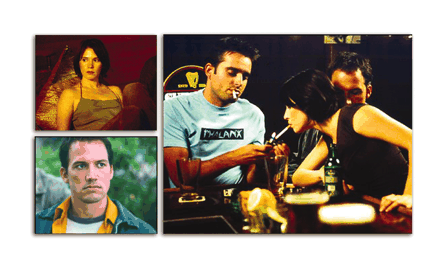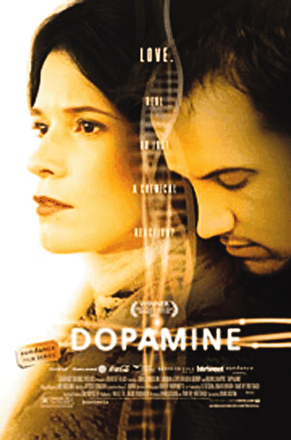Looking for Love
- Christie Carrico, PhD, Executive Officer of ASPET
Dopamine, Mark Decena, Director, Sundance Film Series, 2003.
Dopamine is an independent film produced by the Sundance Film Series, Robert Redford’s initiative to support and expose the work of independent artists. The artist, in this case, is director Mark Decena, with whom there is a short interview prior to the start of the film. In this interview, Decena introduces us to his view that it is because of neurotransmitters, like norepinephrine and dopamine, that one feels love. This statement is essentially the theme of his movie.

Dopamine, despite its scientific title and indie status, is a chick flick—a little deeper and more cinematographically appealing than most, but still a chick flick. Jonathon Livingston stars as Rand, a computer animator and artificial intelligence specialist who has created a computer creature by the name of Koy-Koy. Koy-Koy responds to voice and perceives emotional tone and is, on this basis, designed to be one’s perfect friend—an unfailing companion and faithful confidante. As you may guess, Rand has a problem with interhuman relationships. One night in a local bar, Rand meets Sarah (Sabrina Lloyd), who is battling her own demons. He is immediately attracted to her—we know this because we see a quick flash of his neurotransmitters binding to receptors between close-ups of his bemused face. Sarah, however, ends up leaving the bar with Rand’s colleague, Winston, something that Rand is apparently accustomed and resigned to.
The potential buyers for Koy-Koy want him test-marketed in a preschool learning center, and when Rand goes to install the software there, he encounters Sarah, a teacher at the center. Boy and girl meet (again). Boy can’t commit, because he believes everything about love can be reduced to its physiological basis, and emotions are merely the result of the interplay of brain chemicals with environmental pheromones. And when that chemical interplay ceases, so do the associated emotions. These views are espoused by Rand’s father, played by an especially overweight and unkempt William Windom, who is confronting his wife’s Alzheimer’s disease. The film is set around the tension between Sarah’s quest for a form of love that goes beyond dopamine, norepinephrine, and other signaling molecules, and Rand’s stubborn refusal to accept the risks involved in exploring human relationships.
The cinematography of Dopamine is striking. Set in San Francisco, the film sports some spectacular shots of the Golden Gate Bridge and Marin Headlands in the fog, as well as bike-view vistas of the San Francisco hills. Scenes of Rand and his two colleagues trying to finish the Koy-Koy program with the help of speed and caffeine are shot at super-fast speed and create an interesting sense of urgency. Perhaps the most interesting use of cinematography, however, is in the opening credits, where the viewer takes a flying trip through computer images of the brain, neurons, receptors, neurotransmitters, and ball-and-stick 3D models.
The characters, on the other hand, are fairly one-dimensional. Although the characters espouse deep feelings about love and loss, I found myself not really caring much about what happened to them. I was far less affected by Rand and Sarah’s distress when they became estranged than I was by Koy-Koy’s incomprehension when the computer architects delete his “female” companion.
All’s well that ends well, and the movie reaches its happy ending with Rand and Sarah riding off into the Midwest. Despite the flaws of story and character development, the scenery and cinematography make Dopamine very watchable, and at one hour and twenty minutes, the film is not long enough to be boring.
At the present time, Dopamine is not widely available and is generally found only at theaters that tend to present arts films. The visually appealing and moderately entertaining film could, however, find a wide audience among those of us who like happy endings.
- © American Society for Pharmacology and Experimental Theraputics 2003




